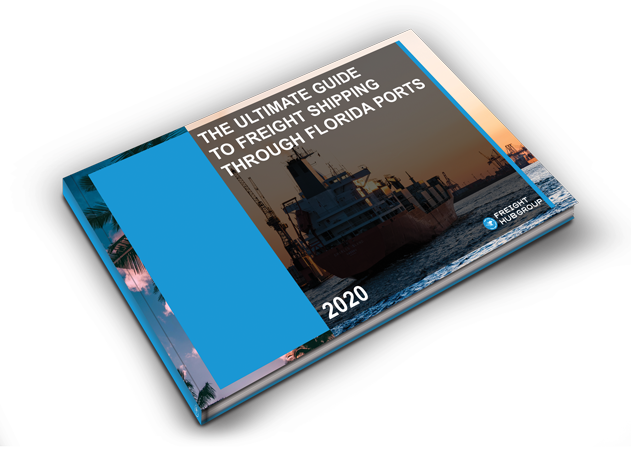Navigating the world of freight and logistics can often feel like learning a whole new language. Freight abbreviations – a ubiquitous presence in the industry – simplify communication, improve efficiency, and streamline operations. However, for those new to the sector or even for seasoned professionals who encounter unfamiliar terms, these abbreviations can sometimes seem like an intricate code to decipher.
Understanding these freight abbreviations is crucial in today’s globalized world where logistics has evolved into a complex network of activities. In a sector that depends heavily on precision and speed, a misinterpretation of these terms can lead to operational errors, miscommunication, or even legal complications.
This article serves as a comprehensive guide to the most common and essential freight abbreviations, helping you navigate the labyrinth of logistics language. Whether you’re a business owner looking to outsource your shipping needs, a logistics professional keen on expanding your knowledge, or simply curious about the industry’s intricate jargon, this guide is designed to simplify the complex and make the arcane accessible.
From Third-Party Logistics (3PL) to Bill of Lading (BOL), from Delivered Duty Paid (DDP) to Non-Vessel Operating Common Carrier (NVOCC), we’ll provide you with the tools to confidently engage in logistics discourse. Not only will we explain what these abbreviations stand for, but also their role and significance in the logistics industry. So, let’s embark on this journey of deciphering the language of logistics!
Freight Abbreviations List
- 3PL (Third-Party Logistics) – Refers to companies that provide outsourced logistics and supply chain management services.
- 4PL (Fourth-Party Logistics) – Represents a higher level of supply chain management that not only executes logistics operations but also involves strategic planning and managing of the entire supply chain.
- BOL (Bill of Lading) – A legal document between a shipper and carrier detailing the type, quantity, and destination of the goods being carried.
- CFS (Container Freight Station) – A warehouse facility where goods are loaded (stuffed) into containers and unloaded (stripped) from the container.
- CIF (Cost, Insurance, and Freight) – An Incoterm where the seller assumes all responsibilities until the goods reach the destination port.
- COFC (Container on Flat Car) – Refers to the transportation of a container on a railroad flatcar without the chassis.
- CONSIG (Consignee) – The party named in the bill of lading to whom the possession of goods is transferred upon delivery.
- CONSOL (Consolidation) – The act of combining many small shipments into one container for the economical movement of goods.
- CUFT (Cubic Feet) – A measurement of volume used in shipping and freight.
- DDP (Delivered Duty Paid) – An Incoterm where the seller assumes all responsibilities and costs for delivering the goods to the buyer’s premises, including import duties and taxes.
- DDU (Delivered Duty Unpaid) – An Incoterm where the seller is responsible for ensuring goods arrive at the buyer’s location, but the buyer is responsible for import duties and taxes.
- DEM (Demurrage) – Charges that the charterer pays to the shipowner for its delayed operations of loading/unloading.
- Det (Detention) – Charges applied when the shipper or receiver holds onto the carrier’s equipment outside the allotted free time.
- DO (Delivery Order) – A document from a consignee, shipper, or an owner of freight ordering the release of the transportation of cargo to another party.
- EDI (Electronic Data Interchange) – The electronic interchange of business information using a standardized format.
- ETA (Estimated Time of Arrival) – The time at which a ship, vehicle, aircraft, or cargo is expected to arrive at the place of destination.
- ETD (Estimated Time of Departure) – The date and time when a shipment is expected to depart from the place of loading.
- EXW (Ex Works) – An Incoterm where the seller fulfills their obligation to deliver when they make the goods available for collection at their premises.
- FCL (Full Container Load) – A shipment that occupies a whole container in terms of weight or volume.
- FIOS (Free In and Out Stowed) – A type of freight rate that excludes the cost of loading and unloading and includes the cost of stowing.
- FOB (Free On Board) – An Incoterm where the seller is responsible for the goods until they are loaded on the ship, after which the responsibility shifts to the buyer.
- FTL (Full Truckload) – A shipment that fills up a truck, or at least makes it economically viable to move it as a single shipment.
- GRI (General Rate Increase) – A proportional increase to base rates applied by shipping lines.
- IATA (International Air Transport Association) – A trade association of the world’s airlines, supporting many areas of aviation activity to help formulate industry policy and standards.
- IMO (International Maritime Organization) – A specialized agency of the United Nations responsible for measures to improve the safety and security of international shipping.
- Incoterm (International Commercial Terms) – A set of pre-defined commercial terms published by the International Chamber of Commerce (ICC) that determine responsibilities and obligations of buyers and sellers involved in international trade.
- LCL (Less than Container Load) – A shipment that is not large enough to fill a standard cargo container.
- LTL (Less than Truckload) – A shipment that does not require a full 48- or 53- foot trailer.
- MBL (Master Bill of Lading) – A contract between a shipper and a shipping line for the transportation of goods on a vessel.
- NVOCC (Non-Vessel Operating Common Carrier) – A shipment consolidator who does not own any vessel, but acts as a carrier legally by accepting required responsibilities of a carrier.
- OBL (Original Bill of Lading) – A unique, original document indicating the ownership of goods, required for their release at the destination.
- OT (Open Top Container) – A type of container that has a convertible top that can be completely removed to allow for goods that cannot be loaded into container doors.
- POD (Proof of Delivery) – A document required from the consignee to certify the delivery of goods in a good condition.
- RF (Reefer Container) – A refrigerated container used for the shipment of perishable commodities.
- RORO (Roll-on/Roll-off) – Ships designed to carry wheeled cargo such as cars, trucks, semi-trailer trucks, trailers, and railroad cars.
- SCAC (Standard Carrier Alpha Code) – Unique two to four-letter codes used to identify transportation companies.
- SOC (Shipper’s Own Container) – A container owned by the shipper, not the shipping line.
- TACT (The Air Cargo Tariff) – A comprehensive source for air cargo rates and rules.
- TEU (Twenty-foot Equivalent Unit) – A unit of cargo capacity based on the volume of a 20-foot-long intermodal container, a common measure of capacity in the shipping industry.
- THC (Terminal Handling Charge) – A fee charged by the terminal for the handling of cargo.
- TMS (Transportation Management System) – A platform used to manage and optimize the daily operations of transportation fleets.
- VGM (Verified Gross Mass) – The total gross mass of a packed container that has been verified, which includes the mass of the goods, packing materials, and the container tare weight.
- W/M (Weight or Measurement) – The basis for calculating freight charges, where the shipper pays the higher of the two, whether it’s weight or measurement.
- WT (Waiting Time) – Time spent waiting for a service or operation, often subject to additional charges in freight and logistics.
About Logistics and Freight Shipping Abbreviations
In the world of logistics and freight shipping, abbreviations play a pivotal role in creating an efficient and effective communication platform. However, it’s crucial to remember that while there is a standard set of abbreviations recognized universally, variations can occur based on regional usage or even company-specific terminologies. These nuances can bring a certain degree of complexity to the already intricate field of logistics.
Regional variations might arise due to linguistic differences, regulatory norms, or even local industry practices. For example, the abbreviation ‘LCL,’ typically referring to ‘Less than Container Load,’ might be interpreted differently in a specific geographic location or under certain regulations.
Similarly, companies within the logistics sector often develop their internal jargon or abbreviations based on their unique operational practices or organizational culture. This means that ‘ABC Logistics’ might use a set of abbreviations that differ slightly from those used by ‘XYZ Freight Services,’ although they operate within the same industry.
Given this potential for misunderstanding, it is of utmost importance that anyone involved in the logistics process, whether they are logistics service providers, clients, or partners, make an effort to clarify any terms they are unfamiliar with. If an abbreviation seems ambiguous or you encounter an unfamiliar term, don’t hesitate to ask for an explanation. This simple act can prevent misunderstandings that could lead to operational errors, service disruption, or potential disputes.
In essence, while this guide provides a comprehensive list of standard freight abbreviations, it’s equally important to stay curious and ask questions. In the intricate labyrinth of logistics language, clarity and understanding are your best navigational tools. Always strive to make sure you’re on the same page with your logistics partners to ensure seamless and efficient operations.
Sources:
- U.S. Department of Transportation – This is an excellent source for understanding freight terminologies as used in the American context. Source: U.S. Department of Transportation
- International Maritime Organization (IMO) – The IMO provides insights into maritime-specific terms. Source: IMO
- International Air Transport Association (IATA) – IATA has a wealth of information on air freight terms. Source: IATA
- Incoterms® 2020 Rules – Published by the International Chamber of Commerce, this is a definitive source for internationally recognized trade terms. Source: Incoterms® 2020
- Federal Maritime Commission – This U.S. government agency offers insights into maritime transport regulations and terms. Source: Federal Maritime Commission
- “A Handbook of Terms Used in Chauffeured Services” by Daniel Jagels – This resource could be valuable for understanding terms specific to ground transportation. Source: Jagels, D. (2017). A Handbook of Terms Used in Chauffeured Services.
- “A to Z of Logistics Terms” – A comprehensive book covering a wide range of logistics terms. Source: Jenkins, D., & Kane, M. (2018). A to Z of Logistics Terms. Transport Intelligence.







